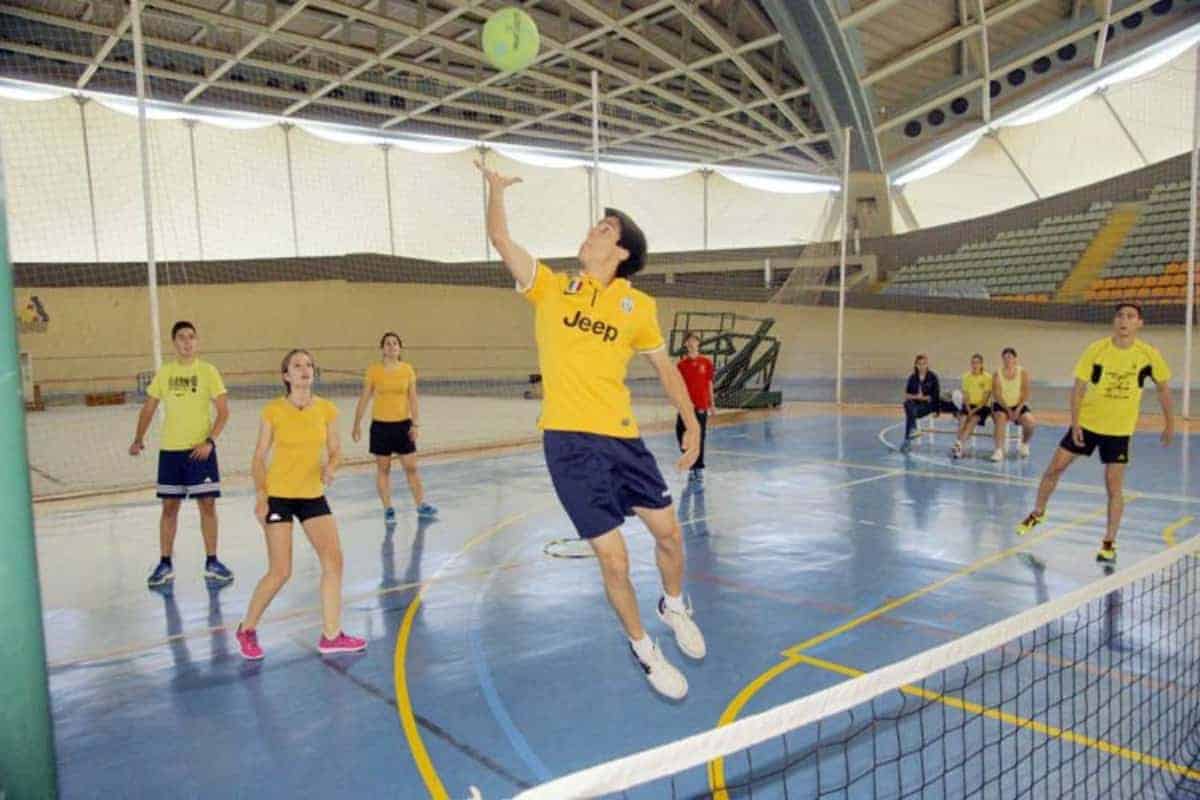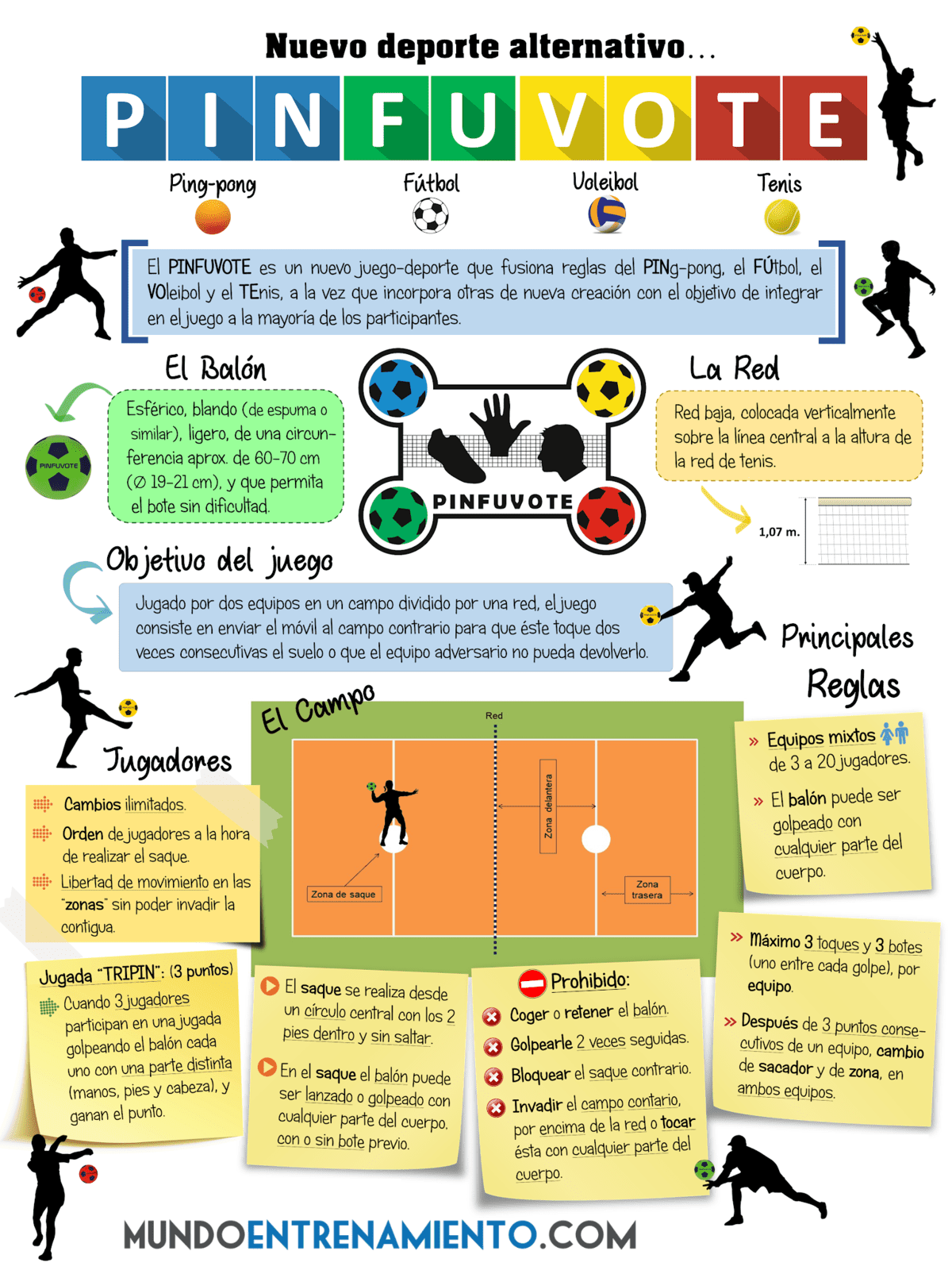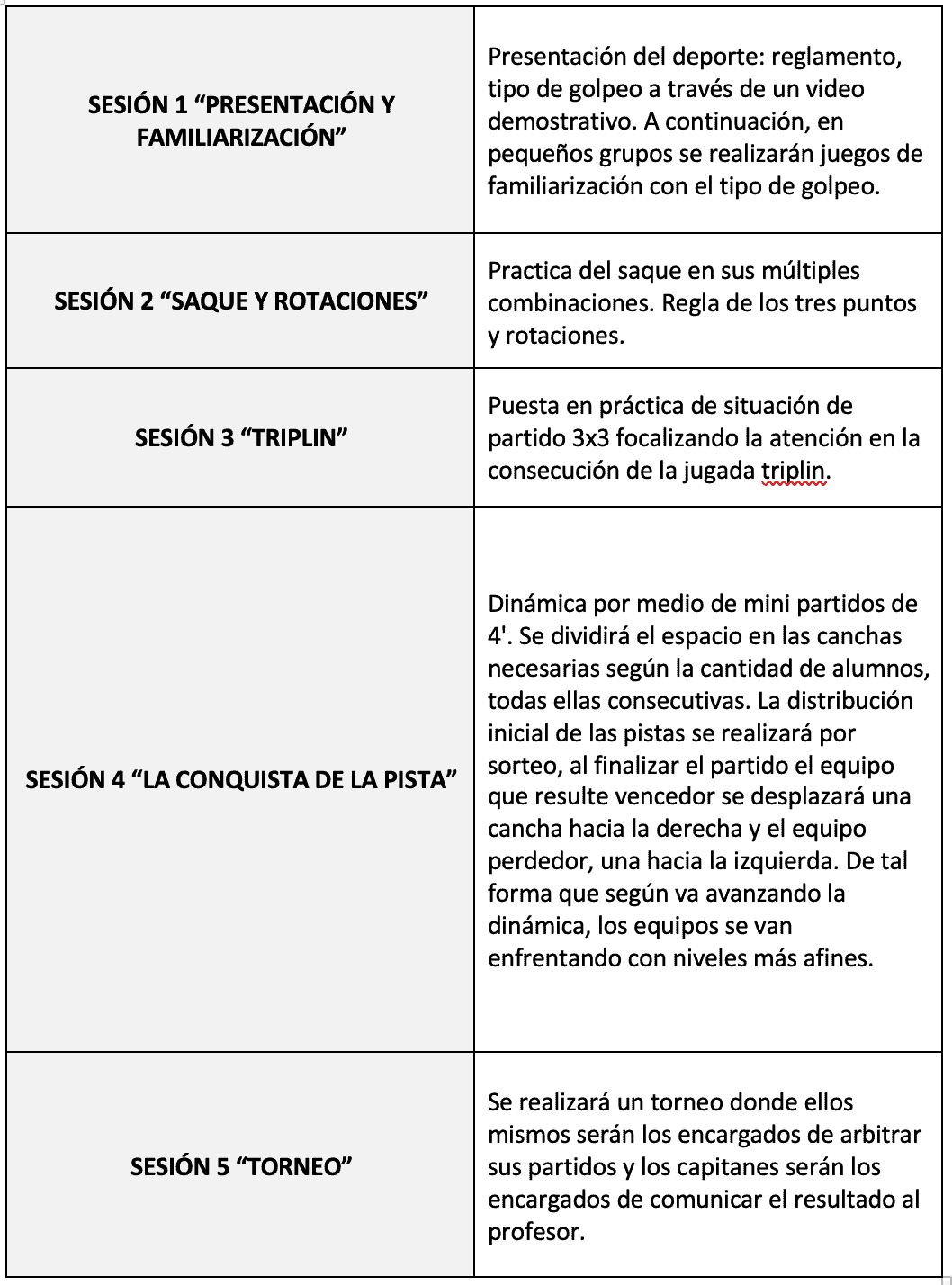The objective of this article is to introduce you to pinfuvote in physical education, as an alternative sport, present the advantages of this modality for students, and offer a didactic proposal to introduce it in the classroom.
There are many alternative sports with very different characteristics as suggested by Piquer Cebrián (2020), but they all share a common feature, the multiple benefits they provide to students.
What is pinfuvote?
Pinfuvote is a new game-sport that combines rules from Table Tennis (ping-pong), Soccer, Volleyball, and Tennis, while also incorporating newly created ones with the aim of involving the majority of students in the game.
Played by two teams on a field divided by a net, the objective of the game is to send the ball to the opponent’s field so that it touches the ground twice consecutively. Additionally, each team has a maximum of three hits and three bounces (one between each hit) to return the ball to the opponent.
Benefits of pinfuvote
Different authors discuss the benefits that the practice of alternative sports has introduced in classrooms. However, following some like Barbero (2000) and Carrera (2016), the most important aspect highlighted is the inclusion of students regardless of their physical abilities.
This achieves awakening their interest in sports practice, fostering their motivation and participation, and bringing a experiential approach that enhances inclusive social values in them.
What is the origin of pinfuvote?
This sport was born in Seville in 1992, where Juan Lorenzo Roca Brines, a Physical Education teacher, decided to innovate in his Volleyball classes to give more opportunities to those students with fewer possibilities due to their physical condition (Muñoz Reina, D., 2010).
The aim was to simplify the rules of the game to increase participation and dynamism. Pinfuvote mixes the characteristics of ping-pong, soccer, volleyball, and tennis, receiving its original name from all of them (PIN-FU-VO-TE).
Initially, it used part of the material and playing field of volleyball, but gradually, it began to introduce some rule changes to facilitate the continuity of the game, and little by little, it modified its material and rules until reaching the current version, as will be seen below.
Where is pinfuvote played?
It depends on the number of participating players, with a volleyball court for teams of up to 6 athletes; for teams of up to 10 players, the size of a basketball court; and for teams of up to 20, a multi-sport court of 40m x 20m.
The surface should be flat, neither too rough nor too slippery. In all cases, it will have two side lines, two end lines, and a line parallel to the center, dividing the field into two sections: the front zone and the back zone. Additionally, in the center of the field, there is a serving circle with a diameter of 1, 1.5, or 2m, depending on the size of the court.
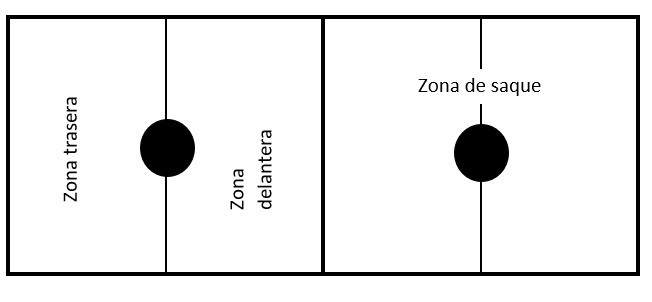
Necessary materials in pinfuvote
Regarding materials, a soft and light foam rubber ball with a circumference of between 60 and 70 cm is necessary.
Currently, pinfuvote already has its official ball, however, foam rubber balls with similar characteristics can be used. A net will be placed over the center line at 1.07m from the ground.
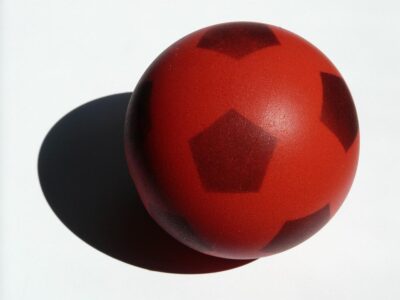
As can be seen, both the playing field and the materials are common in schools or colleges, and this sport was born in an educational center to meet the needs of its students, allowing it to be brought into the classroom without any economic investment.
Hitting and bouncing in pinfuvote
The ball can be hit with all parts of the body (feet, hands, head, …), although the same player cannot hit it more than once unless another teammate has done so first.
Three hits are allowed on each side, which can be continuous or with a bounce on the ground in between.
Scoring system in pinfuvote in physical education
A point is scored when:
- The ball bounces twice in a row.
- The ball does not cross the net.
- The ball goes out of bounds.
- A player hits the ball twice in a row.
- A team exceeds three hits.
Additionally, when an irregular fault occurs:
- Invasion of the opponent’s field.
- Spiking after a serve without any play.
- Touching the net.
- Changing a player from one zone to another without finishing the SET.
Or, when technical fouls are committed:
- Insulting a player (from the same team or the opponent).
- Insulting the referee.
- Performing an unsportsmanlike act on the ball.
- Insulting the audience.
If any of the above fouls is considered serious, the referee will determine if the player is expelled from the playing field, being replaced by another player from the same team.
The serve and the set in pinfuvote
A match will have a maximum duration of 5 sets, each being 25 points and won with a difference of two points. The team will win the match when it wins three sets.
In the case of very contested matches, where the fifth set is played, it will be played to 15 points.
The serve is always performed from the central circle (serving zone), and it is a mandatory condition for it to be valid that both feet are inside it and that it is performed without jumping. For this, the ball can be hit, as during the game, with any part of the body.
The tripin and the rule of 3 points
The tripin is considered a special play, due to the skill and complicity it requires from the athletes. Three players from the same team must hit the ball with three different parts of the body (feet, hands, and head). For this reason, if a team wins the point after performing it, this point will be worth triple.
With the intention of giving opportunities to all players, when a team scores three consecutive points, a rotation occurs on the field, with players moving from the back zone to the front zone in both teams.
Didactic proposal of pinfuvote in physical education
Once the basic rules of the game have been presented, a didactic proposal is offered to bring it to the classroom at an introductory level, recommended for the last years of primary school or the first years of secondary school.
Conclusion
Throughout this article, this modality of alternative sport has been presented, introducing its structure, materials, and basic rules of the game. Mentioning some of the advantages it awakens in students. Now, what do we face as teachers?
Due to its low economic investment, the accessibility of the necessary materials, and its good acceptance among students, pinfuvote is a more than considerable option that allows both students and teachers to learn.
Bibliographic references
- Barbero, J. C. (2000). Alternative games and sports in Physical Education. Lecturas: Educación Física y Deportes, Digital Magazine, 22. Retrieved from http://www.efdeportes.com/efd22a/altern.htm
- Carrera, D. (2016). How to create new sports from Physical Education. Project-based learning as a motivating practical strategy. EmásF, Digital Magazine of Physical Education, 7, 38, 103-118.
- Muñoz Reina, D. (2010) Proposal of an adapted sport: pinfuvote. Efdeportes.com. 148. Retrieved from https://www.efdeportes.com/efd148/propuesta-de-un-deporte-adaptado-el-pinfuvote.htm
- Piquer, M. (2020). Alternative sports in Physical Education. Retrieved from https://mundoentrenamiento.com/deportes-alternativos-en-educacion-fisica/
- Roca Brines, J.L. and Olmedo Ramos, J.A. (2015). PINFUVOTE: a new fusion sport for a diverse educational reality. Efdeportes.com.211. Retrieved from https://www.efdeportes.com/efd148/propuesta-de-un-deporte-adaptado-el-pinfuvote.htm
- Teva Villén, M.R. and García Tascón, M. (2020). Innovation and new trends in the field of Physical Activity. 7: 97-108. Wanceulen Publishing.
Author | Olga Pardo Sánchez
